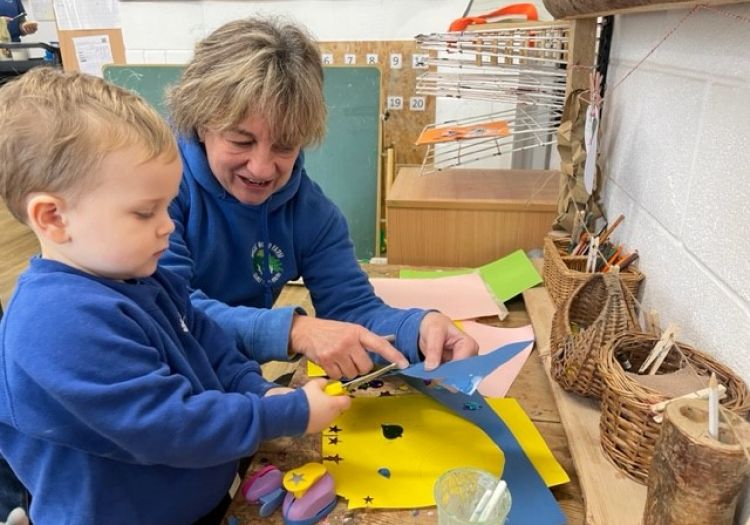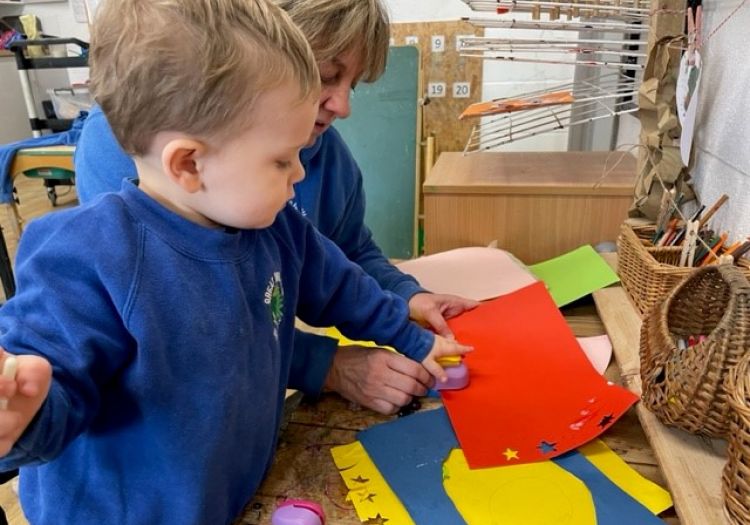Process over Product
A blog explaining our approach to teaching art and creativity with young children.
We hope you have had a wonderful Christmas time with your families and enjoyed sharing the artworks your children bought home as gifts.
Over this last month it is this time of year our Facebook and Instagram feeds can be full of images of perfect decorations, children’s crafts and handprints made into cute reindeer and snow men. We wanted to take this opportunity to explain why your children’s crafts may look a little less perfect!
Here at Great Wood Farm, we believe in a 'Process over Product' art style. We thought it might be helpful to write a blog, to help explore what it really means.
What does Process over Product mean?
Essentially this means we value the creative process and the learning that occurs through this process over a predetermined idea of what the end product should look like.
Through arts and crafts we want to foster a joy of the experience and value the learning that occurs when children are able to freely engage with materials. Through free exploration and experimentation children will learn how to use different tools, how to create different effects, they develop an understanding of cause and effect, learn what makes the glue sticky and what changes the texture or colour of the paint. Each child has the freedom to follow their own ideas and each outcome will be as unique as our children are! With process art, the opportunities for learning are endless and all ideas and outcomes are valued and celebrated.
Product focused art only provides one single outcome. The children are presented with a predetermined outcome and the process involves nothing more than following step by step instructions. For very young children product focused art could mean having an adult paint and place their hands on the paper for them. Mark making they do make maybe cut, manipulated or corrected to fit with the desired outcome. The child’s ideas are not heard or valued. They develop the understanding that the outcome presented by the adult are the correct one, leading to dissatisfaction with their own ideas and abilities. The opportunities learning are minimal. Children are not required to use their creativity, imaginations or problem solving skills, and these, like any skills, need to be practised if we want them to grow.
What's the problem with product art?
Many can argue that the occasional handprint flower, or footprint reindeer isn't going to do any harm, however the research states otherwise.
Dr Gai Lyndsay states that production line activities limit children's opportunity to develop agency, and learn through authentic discovery based experiences. They indirectly tell the child, 'I don't trust you', 'you are not capable', 'your opinion doesn't matter'. All the while negatively impacting the child's ability to develop their own artistic identity, to be expressive and be creative.
The adult is at the centre of the whole process. The child has no say, no autonomy, and no creative control. When it's time to go home, can the child identify their snowman from the 29 others on the shelf? Probably not. Is this really even a product from the child? Yes they are the ones to stick it together, but what say did they have in it at all? All they're taking home at the end of the day, is a craft, made or altered by an adult, for an adult.
What impact does this have on the child?
Laura England at Little Miss Early Years penned the term, 'pinterest pedagogy', describing how early years practitioners may scroll through pinterest, pick a craft they like the look of and decide to do it. Similarly, pinterest is full of tuff trays and environment setups that although they look beautiful, and are certainly, 'instagrammable', once again, missing from this picture, is the child. Stepping back from pinterest, social media and outside influences, tuning into the child's interests and needs, and letting them lead is pedagogy for us.
So what happens when we do value the process?
While we may provide materials and offer inspiration our main focus is on valuing the learning that occurs when children are able to explore materials freely and to peruse their own ideas and goals. Children develop a positive self-identity through seeing their ideas valued and their work celebrated. Their scribbles, finger marks in paint, perfectly imperfect creations and collages are a true representations of their individual ideas and age appropriate capabilities. When we value and celebrate these creations our children see themselves as capable and competent and are confident to express themselves creatively.
The crafts your children bought home as gifts this Christmas are as unique and as individual as each of them are and far, far more valuable than any craft activity we could dream up!


